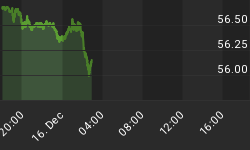Over the past three or four years a strange phenomenon has developed in the global investment markets. With some exceptions, many asset classes, in particular domestic and foreign equities, commodities, and foreign currencies have tended to move in the same direction on a day to day basis. The mega-correlation has lasted so long that most now take it for granted. This leaves investors with relatively simple choices: when to get in to the market in general and when to park assets in cash and U.S. Treasuries.
However, few recall that this pattern is relatively new in the annals of financial history. Fewer still realize the reason for the current anomaly. From my perspective the most logical explanation is fear, which has become global, pervasive, and persistent. Traditionally, when investors fear inflation they buy stocks, commodities, gold, and foreign currencies, and sell dollars and U.S. treasuries. When they fear deflation they sell stocks, commodities, gold, and foreign currencies, and buy dollars and U.S. treasuries. The problem is that right now, no one knows which one to fear. Depending on the news the pendulum swings from one extreme to another on a daily basis.
The natural consequence of an inflationary boom should be a deflationary bust. We've had the boom, but so far we have avoided the lion's share of the bust, or at least the deflationary part. If the government were pursuing a sounder monetary policy, one that allowed markets to function properly, the deflationary scenario would be playing out. While in the long-run this is the correct approach, such a scenario would be very bearish for stocks, commodities and many foreign currencies. If on the other hand, the government fights the recession by putting the inflation pedal to the metal (which is the course they have chosen) investors should look to real assets and certain foreign currencies to protect their purchasing power. But for the most part, that is not happening.
The foreign exchange markets seem to be the center point for this inflation/deflation tug-of-war. After all, if asset prices are falling, cash is king. Since the dollar is still the reserve currency, it is the king of cash, and benefits most from the global deflation scenario. When the dollar rises, treasuries go along for the ride, as investors need a "safe" place to park them. But when the U.S. government reveals yet another staggering deficit forecast, inflationary fears come right back. Hence, a market without a clear direction.
Many look at this dynamic from the perspective of risk appetite rather than fear. They claim that when investors seek risk, they buy risky assets, such as stocks, but when they are risk adverse they seek the safety. But those who fear inflation sell dollars and treasuries not because they seek risk, but because they seek to avoid it.
Of course, if investors felt that the Fed would actually fight inflation with aggressive rate hikes then higher inflation would be perceived as detrimental to stock performance. However, just about everybody realizes that there is virtually no inflation scenario virulent enough to encourage Ben Bernanke and his cohorts to actually raise rates. In actuality, the most feared probabilities are that inflation runs out of control, or that deflation overwhelms the Fed's efforts to prevent it.
From this perspective regardless of the direction of the stock market, assets are simply being re-priced to reflect one of two very unpleasant outcomes. Those who look at rising stock prices as a harbinger of economic growth are therefore mistaken. These moves more than likely reflect investors growing fear that the U.S. debt levels will swamp the dollar.
Given the extent of the fundamental problems that underlie the American economy, and degree to which government policies are making these problems worse, there can be little conviction that our economy will return to sustainable growth anytime soon. Therefore, attributing stock market strength to inflation fears rather economic strength makes far more sense.
Also, if higher U.S. stock prices really did result from an improving U.S. economy, the dollar would be rising in tandem with stocks. However, every time stock prices rise the dollar falls. The best explanation for this dichotomy is that it is inflation not growth that drives both stocks and the dollar. So rising stock prices do not really indicate a bull market in stocks, but a bear market in the dollar. Those who cannot differentiate between the two will continue to misread the market and the economy.
For a more in-depth analysis of our financial problems and the inherent dangers they pose for the U.S. economy and U.S. dollar, read Peter Schiff's 2008 bestseller "The Little Book of Bull Moves in Bear Markets" and his newest release "Crash Proof 2.0: How to Profit from the Economic Collapse." Click here to learn more.
More importantly, don't let the great deals pass you by. Get an inside view of Peter's playbook with his new Special Report, "Peter Schiff's Five Favorite Investment Choices for the Next Five Years." Click here to dowload the report for free. You can find more free services for global investors, and learn about the Euro Pacific advantage, at www.europac.net.
















